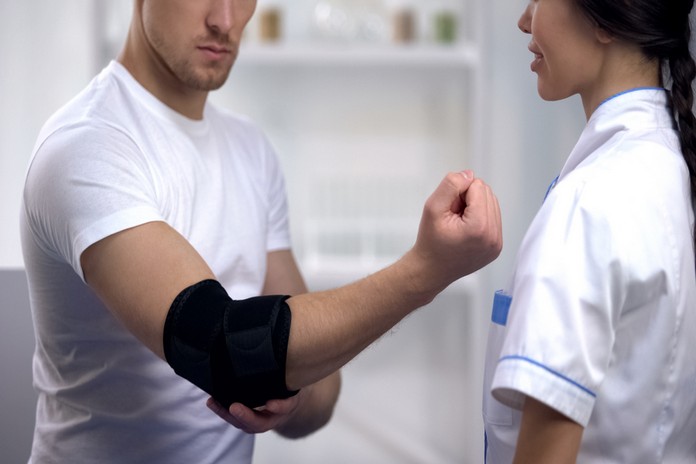Tennis Elbow and Golfer’s Elbow

In tennis and the golfer’s elbow, the main problem is insidious pain when starting to move the arms. It is an overuse injury, which means that it takes very long to develop, usually in people who perform repetitive movements with their arms. The main difference between both is that tennis elbow pain is located laterally, and the golfer’s elbow pain is located medially. The treatment course includes the following:
- Rest and watchful waiting: Patients with acute pain should stop doing the activity that triggers such pain. For instance, practicing overhead sports like tennis. Watchful waiting means that doctors will follow up patients to see how they do with rest and whether they need more specialized treatment.
- Elbow bracing: Partial immobilization can sometimes be required to reduce the pain. Thus, patients can be recommended to use an elbow brace daily. There are also some specialized braces athletes can use during physical activity to reduce the onset of elbow pain. Counterforce traction braces are commonly used, but more recent treatment protocols recommend wrist extension braces instead.
- NSAIDs: The tennis elbow also responds very well to non-steroidal anti-inflammatory drugs. They are over-the-counter medications and should be used carefully to avoid gastrointestinal side effects.
- Topical treatment: In the affected area, patients can also apply some topical treatments. Ice application is very effective in reducing swelling and pain. It should be applied with a towel to avoid frostbite. Topical nitroglycerin is also recommended in some cases to relieve the pain.
- Physical therapy: Doctors will also recommend strengthening and stretching exercises to perform at home. In some cases, it will also be required to visit a formal physical therapist to do more complex exercises that need professional assistance.
- Minimally-invasive therapy: When conservative treatment is not practical, doctors could decide to go one step further to alleviate pain. There are corticosteroid injections for tennis elbow when the inflammation is very severe. This treatment is usually more effective in the golfer’s elbow and improves pain symptoms much better than NSAIDs. Treatments with autologous blood and platelet-rich plasma can also relieve pain, and some doctors use these techniques.
- Surgery: It is only reserved for recalcitrant cases where conservative treatment and minimally-invasive therapy are ineffective.
